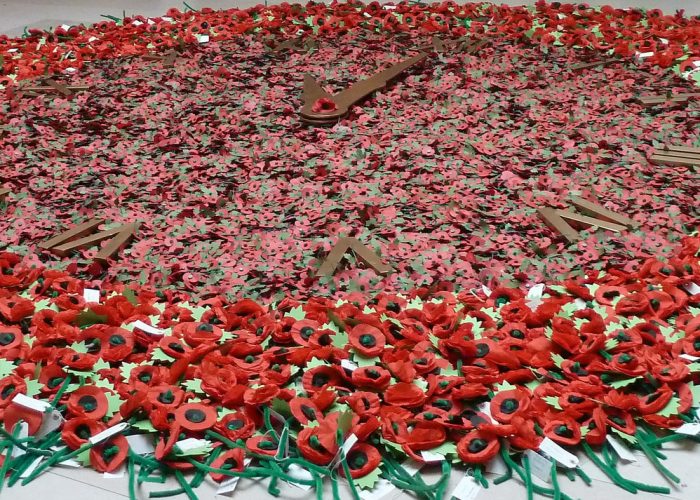Welcome to Issue Eleven of the Journal of Interactive Technology and Pedagogy (JITP). In the ten issues that have been published since Issue One of JITP appeared in 2012, the journal has continuously probed the nexus of pedagogical experimentation and theories of technology in a variety of long-form and short-form formats. In doing so, the journal has co-evolved with the academic fields that it explores and has become an important space for scholars to discuss their work in and around the classroom. Issue Eleven continues this trend as we look forward to the next ten issues of JITP.
As a non-themed issue of the journal, Issue Eleven presents a typically broad set of topics, concerns, and approaches. Among the five articles in this issue are two that take stock of, and offer re-evaluations of, the field of digital humanities (DH) — one a set of personalized reflections on the origins of the field, and the other a quantitative survey of DH programs. The three other articles published in this issue use multiple perspectives to test our understanding of common classroom practices, such as online instruction, employing tools like Google Drive, and using online research journals. Across all of these pieces lies a common interest in experimenting with new methods, as well as a practice of subjecting those methods to rigorous evaluation and sustained critical reflection.
Our issue begins with two pieces that focus on the past, present, and future of the digital humanities, with particular attention to the place of digital pedagogy within it. In “Confessions of a Premature Digital Humanist,” Stephen Brier offers a strong rebuttal to the prevailing origin story of the digital humanities, which typically focuses on the literary concordance work of Father Roberto Busa. Arguing that existing narratives of DH place too much emphasis on early work in digital literary studies and computational linguistics, Brier provides a personal account of his own DH work in the field of history. Brier’s work situates the emergence of some of the most well-known digital humanities centers, such as the Roy Rosenzweig Center for History and New Media and the American Social History Project, within a broader account of the use of technology in historical research over the last fifty years. We believe that Brier’s account will become essential historiographical reading within the fields of digital history and digital humanities.
In “A Survey of Digital Humanities Programs,” Chris Alen Sula, S. E. Hackney, and Phillip Cunningham aim to assess the current state of the digital humanities by exploring existing degree and certificate programs in DH. By analyzing the field through the ways it is taught and instantiated in credit-bearing programs, the authors provide a snapshot of DH as seen through its pedagogical activities. Using the TaDiRAH framework to describe the kinds of work undertaken in DH courses and programs, the authors explore differences between DH programs as they have been formed across geographical, institutional, and disciplinary boundaries. In addition to providing analysis and visualization of various elements of the survey, the authors have shared their data in an associated Github repository as a resource for future scholars. We encourage anyone experimenting with this dataset in the future to let us know by leaving comments on the article.
In “Practicing Digital Literacy in the Liberal Arts: A Qualitative Analysis of Students’ Online Research Journals,” Jennifer Jarson and Lora Taub-Pervizpour reflect upon the research journals they have employed in an undergraduate media-studies course titled “New Information Technologies.” Tracing the development of the course assignments over a number of years, the authors describe the metacognitive benefits of online journal-keeping for students and then embark upon an effort to collect and analyze the types of ways that students engaged the journal-writing practice. As Jarson and Taub-Pervizpour take readers through their data, they demonstrate what data literacy looks like for undergraduate students and describe ways that instructors can best support them in that work.
As the title suggests, in “A Constructivist Approach to Teaching Media Studies Using Google Drive,” Chris Harwood and Alison Mann outline how constructivist learning theories have informed their design of a Grade 11 Media Studies unit. Taking us through their unit plan, the authors illustrate how each activity is informed by theory and put into practice using the Google Online Learning Environment (GOLE). They are careful to show how their design of the unit supports constructive collective learning, while also stressing the importance of iterating on the unit design based on careful evaluation to ensure that theory and GOLE come together to create the most beneficial learning space for students. This article is a useful resource for teachers and instructional designers who want to be integrate technology into their courses in thoughtful and theory-informed ways that support student learning.
As a great complement to Harwood and Mann’s piece, Karyna Pryiomka brings a fresh approach to blended learning in her article, “Care, Convenience, and Interactivity: Exploring Student Values in a Blended Learning First-Year Composition Course.” She presents the results of an ethnographic study in which she evaluated blended learning through the framework of care, encouraging us to include the experiences of non-traditional colleges students when designing blended learning. Through surveys and an analysis of interviews with students, coursework, and the instructor’s teaching journal, she identifies how “care” manifested itself through the course. Pryiomka shows that focus on instructor feedback, interactions with students, and allowing students flexibility in expressing themselves can ensure that students feel cared for, thus increasing the likelihood of their success. Based on these findings, she provides advice on how to thoughtfully design blended learning environments to ensure that digital tools are used thoughtfully to support care rather than replace it.
Taken together, these articles offer cogent reflections and guidance on current practices in digital pedagogy, as well as reflections on the larger import and contexts of those practices. And as always, we invite readers to engage with the articles and authors in the comments.
It is with gratitude and sadness that we note several shifts in our editorial collective with the publication of this issue. We say goodbye to several longstanding members of our collective: Stephen Brier (co-editor of Issue Six), Kiersten Greene (co-editor of Issue Six), Amanda Gould, Andrew Lucchesi (editor of Issue Eight), Carlos Hernandez (co-editor of Issue Nine), and Tyler Fox (co-editor of Issue Nine). This issue also marks Laura Kane’s last as our tireless and gifted Managing Editor, though she will be continuing on as a member of the editorial collective. We thank all of these EC members and editors for their dedicated service to the journal and wish them every success in the years ahead.
Even as we say goodbye some members of our journal, we are delighted to welcome some new voices to the Editorial Collective: Lisa Brundage, Jojo Karlin, Anke Geertsma, and Christy Pottroff, and our new managing editor, Alessandro Zammataro. We look forward to working with you!
We want to acknowledge our gratitude to those who helped bring Issue Eleven to fruition, including Jojo Karlin, who served as Associate Editor, Managing Editor Laura Kane, lead stager Luke Waltzer, and the copyediting and staging teams. We are very grateful for your hard work.
Finally, we want to send a special note of gratitude to Stephen Brier, founder of the Interactive Technology and Pedagogy doctoral certificate program at the CUNY Graduate Center and the driving force behind the creation of JITP. Steve’s vision of the academy has always placed pedagogy at the center of scholarly activity, even as pedagogical activities have been overlooked or diminished by the profession at large. But Steve, a labor historian and — as he calls himself in the article that appears as part of this issue — a “premature digital humanist,” has always advocated for a particular version of pedagogical practice that advances egalitarian principles and shared practice, along with a passionate commitment to public education. We have an editorial collective, and not an editorial directorship, because of Steve’s formative experiences in founding the Radical History Review; he has passed on those values of collective endeavor to our own journal, and we are a strong collective because of it. commitment to JITP and to shared labor practices was evident in his contributions to the journal: from co-editing Issue Six to serving as our most rigorous copyeditor, Steve pitched in at every opportunity and at every level of the journal’s work. Though we will miss him, we are very glad to publish a piece by him in this issue that — like Steve’s entire career — represents an important, necessary, and vital contribution to the scholarly record.







